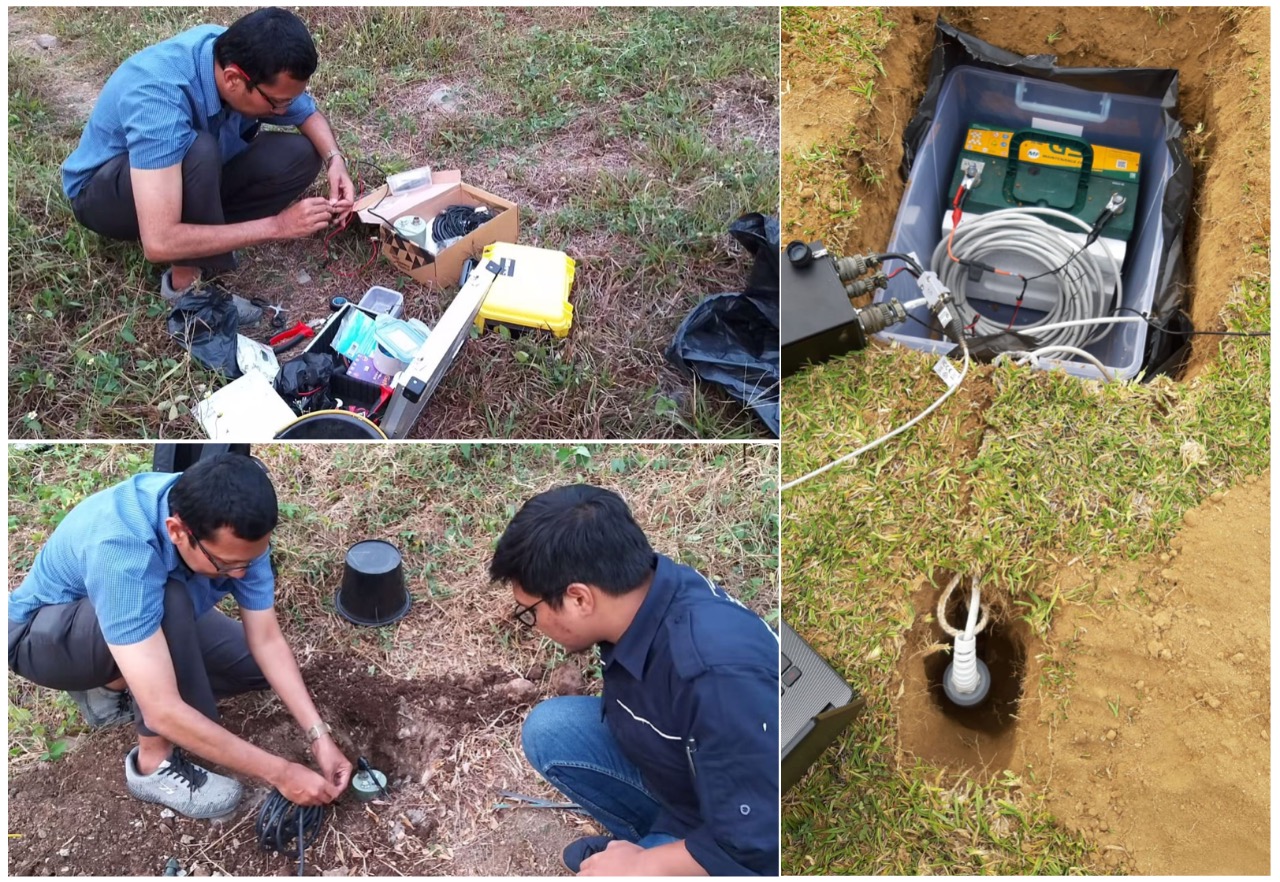Global Geophysics Group and LPPM ITB Install Seismographs to Monitor Earthquake Swarm Seismicity in Bogor
On Friday, August 23 2019, at around 11.10 WIB, the Kab. Bogor was rocked by a magnitude 4 earthquake with a source depth of 5 km. Based on the BMKG report, the epicenter of the earthquake was approximately 101 kilometers southwest of Bogor Regency and the shaking was felt most strongly in Nanggung District, Kab. Bogor. The earthquake was also felt in Sukabumi and even felt in Jakarta.
This condition certainly creates panic for some people in Bogor and its surroundings. This earthquake was a series of earthquakes that occurred since August 10 2019. BMKG released more than 76 earthquakes around the Mount Halimun Salak National Park with magnitudes between 2 – 4 and a depth of the epicenter of less than 10 km.
In response to this, the Global Geophysics Scientific Group (KK) – FTTM ITB, together with LPPM – ITB and the Center for Excellence in Earthquake Science and Technology – ITB installed 8 seismometer units on Friday (23/8/2019) surrounding the Gunung Halimum National Park area – Snakefruit. The installation is under coordination with the BMKG Bandung Office.
Swarm Earthquake
From a seismological point of view, the phenomenon of a series of earthquakes that occurred in Bogor is suspected to be a swarm earthquake. This is based on the high intensity of seismicity grouped in one cluster and the relatively small strength of the earthquake, making it difficult to identify the main earthquake.
Seeing the phenomenon of swarm earthquakes at the foot of Mt. Salak, there are at least several things that must be understood from a seismological perspective. First, the distribution pattern of the earthquake hypocenter to determine the trigger source, second, the mechanism of the earthquake source, and third, the pressure strain pattern that occurred as a result of a series of earthquake swarm events in Bogor.
According to Prof. Nanang T. Puspito as chairman of the Global Geophysics Group, the installation of 8 seismograph units is part of the scientific responsibility of seismology to understand earthquake phenomena in the District. Bogor better. “And the hope is that it can provide information to the Bogor Regency government and the West Java Provincial Government in efforts to mitigate and reduce earthquake risk,” said Prof. Nanang in a statement received by ITB Public Relations.
Since Friday (23/8/2019) morning, the team from KK Global Geophysics has left for Bogor, Sukabumi and Pelabuhanratu. Dr. Zulfakriza as the team leader said that there were three team members who departed, namely Ade Surya Putra (S3 student at PMDSU Geophysical Engineering-FTTM ITB), M. Randy Caesario Harsuko (Master’s student in Geophysical Engineering) and Yopi Apryan Fadilah (Technician at the Geophysical Engineering Study Program) .
To speed up the process of installing seismographs, the team was divided again, namely the North Team which focused on installing seismographs in the Sukabumi, Citeko and Bogor areas, while the South Team focused on installing seismographs in the Pelabuhanratu area and the western foot of Mount Salak.
Meanwhile, according to Dr. Andri Dian Nugraha, as Chair of the ITB Geophysical Engineering Masters/S3 Study Program, monitored the swarm earthquake that occurred in Bogor for 30 days using local networks and close to the location where the swarm earthquake was distributed. “Furthermore, after 30 days, the team will identify the event and determine the hypocenter of the earthquake. We hope that no large earthquake will occur from the series of swarm earthquakes that occurred in Bogor,” said Dr. Andre.

